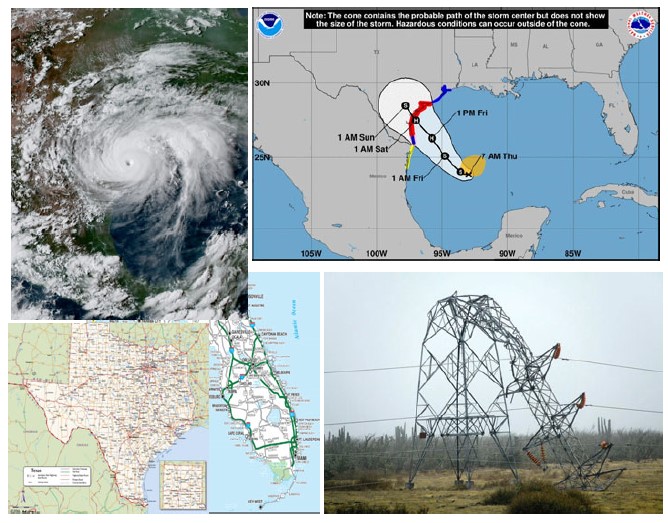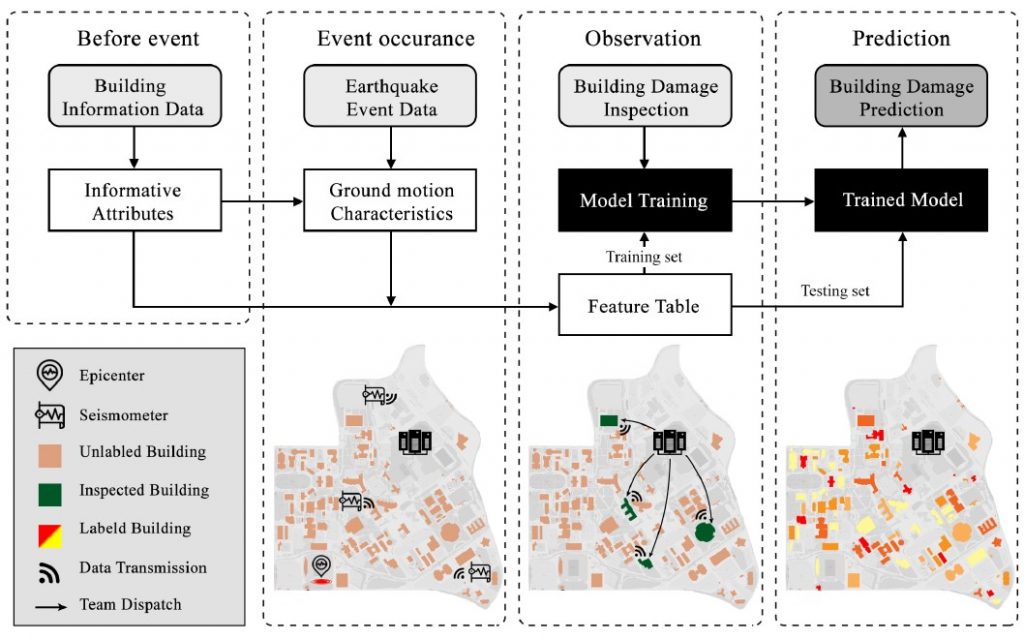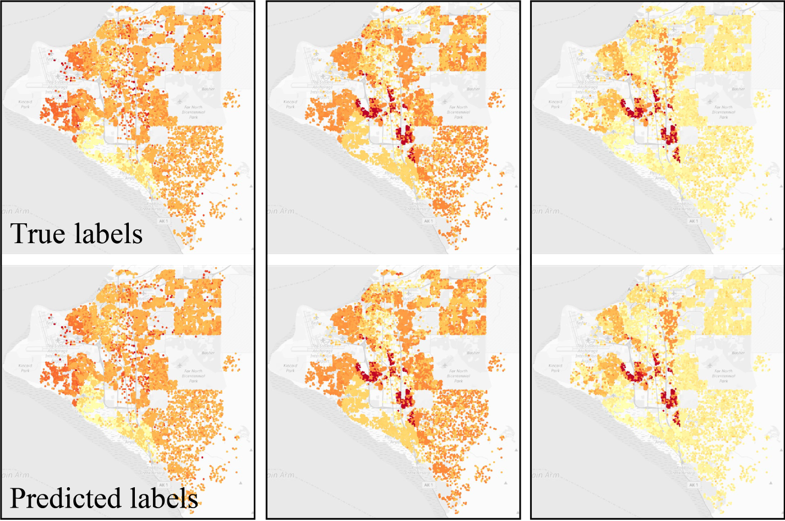Focus Area 1: Resilient Power Infrastructure and System under Extreme Weather

Extreme weather such as hurricanes, tornados, and heat waves often lead to vast and long-lasting blackouts, with serious social and economic consequences. A systematic investigation of power network resilience, appropriate preventive actions, and optimized post windstorms restoration and repair planning, is expected to substantially alleviate such adverse impacts. This focus area will allow the lab to understand and enhance the power infrastructural and system resilience given the extreme weather events and their increasing occurrence rate due to climate change.
Focus Area 2: Optimal Post-Hazard Building Reconnaissance
 Knowing the infrastructural damage across the entire hazard-impacted region is critical for efficient disaster management and relief. However, assessing the damage requires labor-intensive reconnaissance surveys, which may take months to inspect all the buildings affected. To expedite the damage assessment process, previous studies have considered the possibility of using a few inspected buildings as data points to train a supervised learning model and then estimate damage for uninspected buildings. Important questions remain unanswered, such as 1) Given the hazard and building properties, which buildings should we inspect to maximize the predictive power of the supervised learning model? 2) Given the limited inspection resources (i.e., crews, work hours), how do we design inspection routes to visit the selected buildings? 3) How do we integrate 1) and 2) into a unified “resource-constrained optimal learning” framework to guide inspection teams through a post-hazard reconnaissance mission?
Knowing the infrastructural damage across the entire hazard-impacted region is critical for efficient disaster management and relief. However, assessing the damage requires labor-intensive reconnaissance surveys, which may take months to inspect all the buildings affected. To expedite the damage assessment process, previous studies have considered the possibility of using a few inspected buildings as data points to train a supervised learning model and then estimate damage for uninspected buildings. Important questions remain unanswered, such as 1) Given the hazard and building properties, which buildings should we inspect to maximize the predictive power of the supervised learning model? 2) Given the limited inspection resources (i.e., crews, work hours), how do we design inspection routes to visit the selected buildings? 3) How do we integrate 1) and 2) into a unified “resource-constrained optimal learning” framework to guide inspection teams through a post-hazard reconnaissance mission?
Focus Area 3: Expedited Regional Hazard Impact Simulation
 Natural hazards are rare occurrences that impose extreme loading conditions on our infrastructure beyond normal operational states. Estimating regional infrastructural damage during natural hazards heavily relies on numerical simulation. In this focus area, we are particularly interested in addressing challenges due to 1) a large number of infrastructure and structural systems need to be modeled leading to computational complexity; 2) different levels of simplifications of the physical process in the modeling yield discrepant responses from the true responses; 3) the lack of data for effective regional hazard impact simulation methodology development and validation.
Natural hazards are rare occurrences that impose extreme loading conditions on our infrastructure beyond normal operational states. Estimating regional infrastructural damage during natural hazards heavily relies on numerical simulation. In this focus area, we are particularly interested in addressing challenges due to 1) a large number of infrastructure and structural systems need to be modeled leading to computational complexity; 2) different levels of simplifications of the physical process in the modeling yield discrepant responses from the true responses; 3) the lack of data for effective regional hazard impact simulation methodology development and validation.